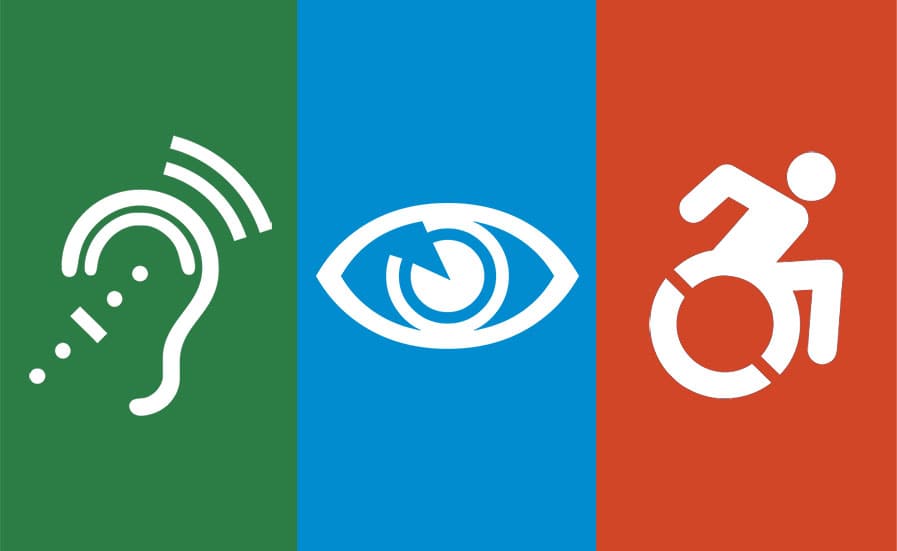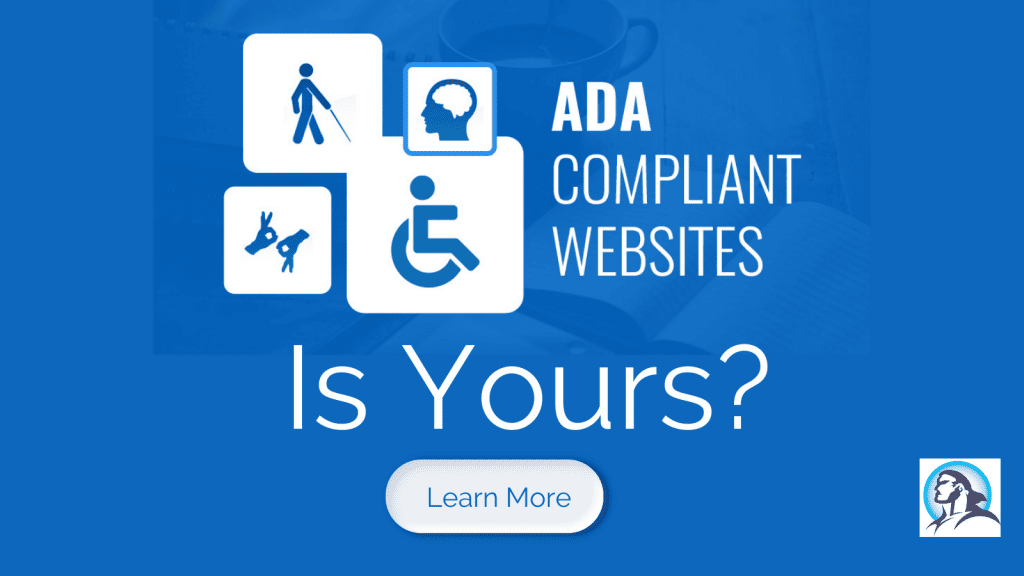What does making your site accessible do for you, your customer and everyone else for that matter?
It’s the right thing to do: Let’s face it…it’s 2021 and everyone should be included. By making your website accessible for all, you’re giving equal opportunity to access crucial information that significantly helps our everyday lives.
Consider the fact that 20% of the population have disabilities that prevent them from using the Internet but only 2% of the internet is accessible.
Peace of mind from litigation: “What does the American Disabilities Act (ADA) have to do with MY website,” you might ask?
Plenty, is the answer from Barbara Snider, at Hinman & Carmichael, LLP, a lawyer for the liquor industry.
According to Snider, “ There is an on-going ADA regulations battle being waged against commercial websites…”
THE SOLUTION TO BEING A.D.A. COMPLIANT?
SamsonMedia has partnered with accessibe to bring websites up to compliance and protect clients from the increasing likelihood of litigation while making sites A.D.A. compliant.
Opportunity & Market: The CDC reports that 61 million Americans are currently registered as disabled with an average annual spending power of 490 billion dollars. Globally, there are 1.3 billion people within the disabled community with an annual spending power of 8 trillion dollars and growing due to population growth.
Brand Exposure & Awareness: Making your website is accessible means that you’re now reaching out to 20% more of the population that was not there before by default. It also means that more people will be talking about your company and attracted to your inclusive ethos. Wouldn’t you want to buy a product or service from an ethically responsible business that cares about it’s customers?
The Accessibility Gap:
Accessible coded websites from the get go is an amazing idea but in reality the vast majority of websites are created with look and feel and specific marketing tasks in mind as the priority. Also, since the ADA compliance laws are relatively new (2018), many website developers, businesses and the public at large are unaware that this is even an issue.
Education for the future is important so coders and business owners do get their website accessible from the get go, but, realistically, there are 350 million existing websites live at the moment. No chance to go back and get them all accessible manually.
Business owners are key in this transition. But they lack expertise and the resources needed for the “traditional way”, plus they can’t be experts in accessibility, they can’t afford ongoing costly projects, mostly because the website itself usually costs less than making it accessible.
Manually it’s a long and probably an unrealistic mission. People with disabilities need and deserve access now. Not in 50 years. And maybe never.. as the gap will just get bigger.
Competition: accessiBe vs. The Rest
When it comes to ADA compliance the Competitive Landscape is comprised of three different types of solutions out there:
Manual Remediation- Experts in web accessibility conform your website in favor of accessibility to achieve a high level of compliance. This increases the cost of the website by an average of 200% extra. This also does not include the cost of the audit and ongoing maintenance to ensure ongoing compliance. Websites under 1,000 pages can cost $15K per year not including the maintenance. Not to mention it takes 4-26 weeks to make your website compliant (the first time).
Free or low-cost widgets and plugins: These only handle CSS adjustments for low visual impairments and epilepsy, and only touch upon up to 25% of the WCAG requirements (meaning the sites are still inaccessible).
You have to hire someone to work on the site to get it up to compliance and if you have work on your site from then on you may have to hire them again to make it compliant again.
accessiBe: Fully automated from audit to ongoing maintenance. Includes CSS adjustments for visual impairments, epilepsy, color blindness, cognitive and learning disabilities by way of the search bar for definitions. It also includes the back end 75% of the WCAG requirements which include: assistive technology optimization, ARIA attributes, elemental structural roles and provides alt tags for images using OCR and IRIS AI technologies. If this is used and changes are made to the site the proprietary AI adjusts to make it more compliant.
It eliminates paying a skilled developer to fix the site. This is another 40 hours on average to get the site to pass a compliance check but even then it’s not guaranteed. Then there is the issue that a week later it can fall out of compliance due to editing and updates by the owner of the site. Websites are often dynamic in nature and can change frequently especially WordPress websites
With accessiBe, your annual license fee is less than a tenth the cost of initial manual remediation, and of course about a hundredth the cost of ongoing maintenance throughout a year.
The core reason that accessiBe works the way it does and billing works the way it does is to address the 98% of SMB’s that cannot afford manual accessibility work. We believe that every website should provide equal access to all, but it’s not feasible for most business owners to accomplish this on their own. That’s where accessiBe comes in.


